Homepage / News Details
What is the disinfection of the swimming pool?
- Categroy:News
- Author:
- Origin:
- Release Time:2019-05-06 17:41
- Views:
【Summary】The swimming pool is a public place. The area exposed by people in the swimming pool is the most. It is easy to be called a hotbed for the spread of germs. Therefore, it is not negligent to do the pre
What is the disinfection of the swimming pool?
【Summary】The swimming pool is a public place. The area exposed by people in the swimming pool is the most. It is easy to be called a hotbed for the spread of germs. Therefore, it is not negligent to do the pre
- Categroy:News
- Author:
- Origin:
- Release Time:2019-05-06 17:41
- Views:
The swimming pool is a public place. The area exposed by people in the swimming pool is the most. It is easy to be called a hotbed for the spread of germs. Therefore, it is not negligent to do the prevention and disinfection of the disease in the swimming pool. At present, the disinfection of swimming pools is done by adding chemical disinfectants. The method is usually a chlorine disinfectant. Commonly used chlorine disinfectants are:
1, liquid chlorine.
2, bleaching powder.
3. Sodium hypochlorite.
4. Sodium dichloroisocyanurate.
5. Trichloroisocyanuric acid.
6, bromochlorohydantoin.
7. Chlorine dioxide.
The choice of disinfectant should meet the following requirements:
1. Does not cause water and environmental pollution, and does not change the water quality of the pool.
2. No irritation or irritation to the human body.
3. Little corrosion on building structures, equipment and pipelines.
4, safe, non-toxic, no residue.
5, the sterilization ability is efficient and fast.
Disinfectants used in swimming pools are usually chlorine-containing disinfectants, and chlorine-containing disinfectants are common fungicides and are extremely widely used. For example, trichloroisocyanuric acid, bleaching powder, and bromochlorohydantoin are chlorine-containing disinfectants.
Trichloroisocyanuric acid, abbreviated as TCCA, is a chlorinated derivative of isocyanuric acid with an effective chlorine content of up to 90%. Trichloroisocyanuric acid is a highly effective, low toxicity, stable, broad-spectrum and fast disinfectant that can quickly and effectively kill various bacteria, spores, fungi, molds and cholera. Therefore, TCCA is the most used and widely used swimming pool disinfectant.
The main component of the bleaching powder is calcium hypochlorite, which is a disinfectant which is more commonly used and has a good bactericidal effect. In an acidic environment, it has a strong bactericidal power and a rapid response. However, the bleaching powder is used excessively, the aqueous solution is alkaline and has sediment, and a layer of white floating matter on the surface of the water has a stimulating effect on the gastrointestinal mucosa, respiratory tract and skin of the human body.
Bromochlorohydantoin is commonly known as bromine tablets, which are more stable than chlorine preparations, have a milder odor, and are less sensitive to changes in pH than chlorine. However, bromine preparations are corrosive at high doses, which are strongly irritating to human skin, eyes and cells, and at the same time produce a carcinogen, bromate, under pool conditions.
These disinfectants must reach a certain dose to cause harm. The amount of residual chlorine is an important indicator to determine whether the swimming pool water is up to standard. It means that the application amount is enough to kill bacteria and viruses and there is still remaining, which can ensure the disinfection effect of the water body. However, excessive chlorine content will cause a certain amount of damage to the human body. Therefore, there are strict requirements for chlorine disinfectants and control standards. Our chlorine disinfectant products have high standards of qualification and can be greatly reduced. The degree of damage to the human body.
Releate News

Time of issue : 2024-04-22 08:56:03

Time of issue : 2024-04-15 16:52:27

Time of issue : 2024-04-09 10:13:04
CONTACT US
PRODUCTS
CALCIUM HYPOCHLORITE
TCCA
SDIC
BCDMH
FEEDBACK
© 1999-2018 北京网站建设有限公司 Copyright © 2012-2022 All Rights Reserved Powered by www.300.cn 冀ICP备12012949号 津公网安备 12010302002173号 Seo tag

